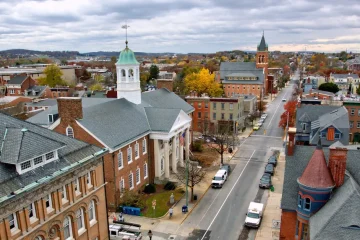The construction industry has given way to sustainable building practices as it seeks to address environmental concerns. These practices are concerned with the ecology, economy, health, society and technology of a place. They guarantee that our buildings will be responsible and efficient in serving generations yet unborn through an all-encompassing approach.
Environmental Benefits
Reduced Carbon Footprint
One of the main benefits of sustainable building practices is the reduction of carbon footprints. By incorporating energy-efficient systems, the building process consumes less energy and produces fewer greenhouse gasses. Using renewable energy sources such as solar panels and wind turbines further reduces dependence on fossil fuels, leading to a cleaner environment.
Conservation of Natural Resources
Sustainable construction emphasizes the use and recycling of environmentally friendly materials. For example, reclaimed wood, recycled metals and locally sourced stones reduce the need for new raw materials, thus preserving natural resources. Efficient water management systems that reduce water consumption also contribute to conservation, ensuring that we do not waste our planet’s precious resources.
Enhanced Biodiversity
Integrating green roofs and living walls into building design is eco-friendly. These features provide habitats for a variety of species, maintaining ecological balance in cities. Furthermore, sustainable building practices often include measures to preserve existing natural habitats during construction, further enhancing local biodiversity.
Economic Benefits
Long-term Cost Savings
While the initial investment in sustainable building practices can be significant, the long-term cost savings are substantial. Energy efficient building processes cost less due to less energy and water usage. Additionally, these buildings generally require less maintenance and cost less, providing significant economic benefits over time.
Increased Property Value
Resale value is higher in permanent buildings. As awareness of environmental issues increases, more and more buyers are looking for eco-friendly homes and commercial spaces. These properties are generally more popular with buyers who prioritize sustainability, making them a valuable asset in the real estate market.
Incentives and Rebates
Governments and utilities around the world offer various incentives and discounts for adopting sustainable building practices. These can include tax incentives, subsidies and rebates for energy efficient raw materials. Such financial incentives can offset initial costs, making sustainable construction economically viable for many developers and property owners.
Health and Well-being Benefits
Improved Indoor Air Quality
Sustainable buildings dramatically improve indoor air quality through the use of non-toxic materials and enhanced ventilation. By reducing the presence of allergens, pollutants and volatile organic compounds (VOCs), these buildings create a healthier living and working environment, and improve the overall health of their occupants hip.
Enhanced Comfort and Productivity
Natural light, thermal comfort and improved acoustics are key features of sustainable housing. These features not only create a more pleasant environment but also increase productivity. Studies have shown that residents of green buildings tend to experience higher levels of comfort and satisfaction, leading to better productivity and well-being.
Positive Impact on Mental Health
Having green spaces, incorporating organic elements, such as indoor plants and natural materials, has been shown to reduce stress and promote mental health. Prioritizing these elements can create a calmer and more refreshing environment, contributing to the psychological well-being of occupants.
Social Benefits
Community Engagement
Sustainable construction projects generally involve local communities, creating a sense of involvement and responsibility. By engaging residents in the planning and development phase, these projects promote social responsibility and environmental management, and encourage collaborative efforts towards sustainable development.
Job Creation
The green manufacturing sector is a booming industry, creating a lot of job opportunities. From the planning and construction phase to the ongoing maintenance of permanent buildings, the projects offer employment opportunities. Additionally, it provides opportunities to develop skills in sophisticated sustainable building techniques.
Equitable Access to Resources
Sustainable building practices can also address social equity by providing affordable housing with environmentally friendly materials. Inclusive design ensures that these housing units meet the needs of people with different needs, and promotes fairness and access to housing solutions.
Technological Benefits
Innovation and Development
The drive for sustainability has driven innovation in building materials and technology. From energy-efficient windows to advanced insulation and smart building systems, these advancements make buildings more efficient and sustainable. For example, the use of Galvanized Steel Sheet in construction provides sustainability and reduces maintenance requirements, consistent with sustainability goals.
Enhanced Durability and Resilience
Sustainable buildings are often designed to withstand extreme weather and other environmental challenges. The use of durable materials and flexible design principles ensures that these structures have a long life and perform well under stress. This not only saves investment, but also reduces the need for frequent maintenance and replacement, further contributing to sustainability.
Conclusion
The benefits of sustainable building practices are broad and multifaceted. From reducing environmental impact and saving costs to improving health, promoting social equity, and advancing technological innovation, sustainable architecture and the way forward Looking to the future, adopting these practices will be critical to creating a built environment that is responsible and resilient.
One company in the Construction Company in Oman exemplifies these principles by integrating sustainable practices into its projects, setting a standard for others to follow. By embracing sustainable development, we can create a better world for ourselves, and future generations, by ensuring that our progress today does not compromise tomorrow’s prosperity.




